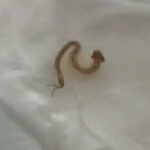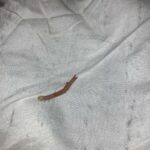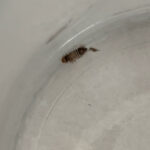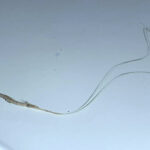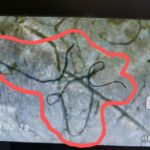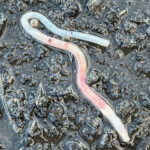Worms in humans are often, but not always, filarial worms. Filarial worms are parasitic worms in humans that require a human host to survive and complete the life cycle. Other types of worms are found in humans, but these can also survive in other environments. They include more commonly recognized species such as pinworm and hookworm.
The life cycle of filarial worms is similar among the various species. An infected fly or mosquito bites a human and deposits larvae of the filarial worm into the feeding site. The larvae reach adulthood, mate, and the females produce offspring. The young worms, called microfilariae, reside in the bloodstream during peak times for human-biting insect activity. At this stage, they may be consumed when a mosquito or fly lands and feeds. The cycle continues as the insect lands on a new human host and transmits the larvae. It may be several months and often years before an individual exhibits symptoms of having been infected with filarial worm larvae.
Eight known species of filarial worms infect humans. They are divided into three categories: worms that invade tissue and skin, those that reside in the lymphatic system, and those that thrive in areas around the stomach, lungs, and heart.
The parasites Wuchereria bancrofti, Brugia malayi, and Brugia timori cause lymphatic filariasis. Worsening symptoms often lead to a condition known as elephantiasis, which causes unusually large swelling in the extremities.
River blindness, technically called onchocerciasis, is also a serious condition as this filarial worm – Onchocerca volvulus – is responsible for lesions on the eye and diseases of the skin.
Infections caused by the loa loa, or eye worm, may include swelling and skin eruptions. As the loa loa worm migrates through the eyeball, the sensation is psychologically unpleasant as well. Mansonella streptocerca is a third species known to reside in skin and deeper tissue.
Mansonella perstans and Mansonella ozzardi inhabit the stomach and lung cavities and are also found, although less often, around the heart.
Animal heartworms, also classified as filariae, very rarely may invade the human system and migrate to the lungs. They cannot survive inside a human body, but will cause scar tissue and may be mistaken for a cancer nodule. In some cases, pain and a persistent cough will alert a doctor to the condition, but the node itself will cause no long-term harm.
Filarial worm infestations occur in several countries, including Australia, Africa, the Philippines, Asia, and South America. And, somewhat surprisingly, human worm infections are one of the leading causes of disability, especially those that affect the eyes and the lymph vessels.
Recommended Reading (click on the picture for details):
All About Worms is always free, always reader-supported. Your tips via CashApp, Venmo, or Paypal are appreciated! Receipts will come from ISIPP Publishing.




